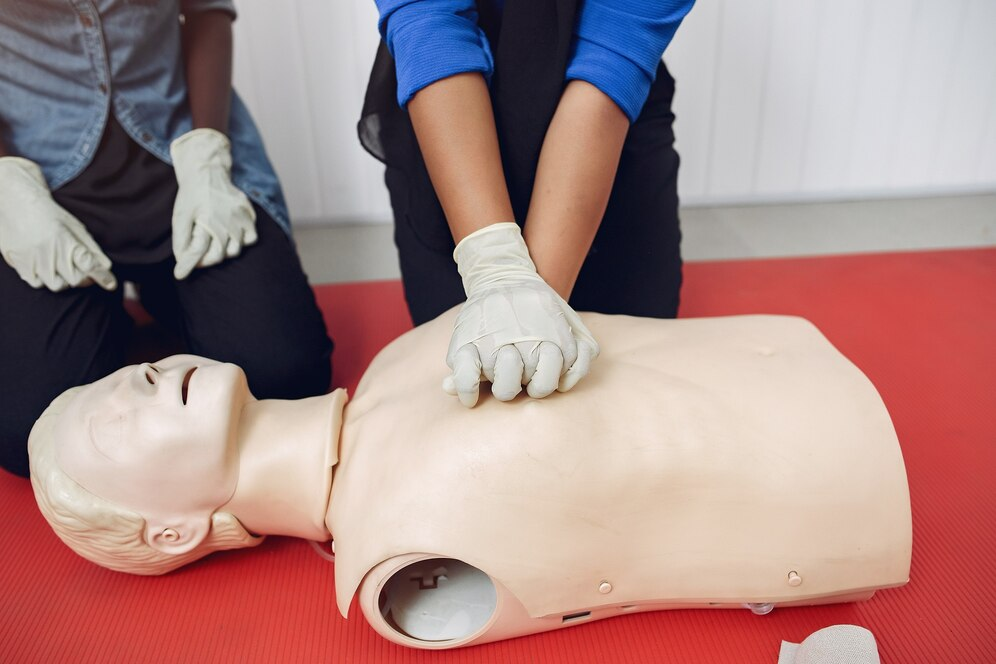The great outdoors offers endless opportunities for adventure, whether hiking through rugged trails, camping under the stars, or kayaking down rushing rivers. But with adventure comes risk—unexpected injuries, sudden weather changes, and medical emergencies can happen when you're far from professional help.
Being prepared with first aid knowledge and supplies can mean the difference between a minor setback and a life-threatening situation. This guide covers essential first aid skills and preparations for outdoor enthusiasts, helping you stay safe while exploring nature.
Why Outdoor First Aid Is Different
First aid in the wilderness isn’t the same as in urban settings. When you're miles from the nearest road or hospital, you may need to:
Stabilise injuries for hours (or days) before help arrives
Improvise with limited supplies
Handle environmental threats like hypothermia, heatstroke, or animal encounters
A well-prepared adventurer doesn’t just carry a first aid kit—they know how to use it effectively in remote conditions.
Essential First Aid Skills for the Outdoors
1. Assessing the Situation
Before jumping into treatment, evaluate:
Safety: Are you or the injured person in immediate danger (e.g., falling rocks, wildlife, fast-moving water)?
Mechanism of injury: How did it happen? A fall from height may mean spinal injuries, while a twisted ankle may be simpler to manage.
Resources: What first aid supplies do you have? What can you improvise?
2. Treating Cuts and Scrapes
Outdoor wounds are prone to infection due to dirt, bacteria, and delayed care.
Clean thoroughly: Rinse with clean water (filtered or treated if necessary). Remove debris with sterilised tweesers.
Disinfect: Apply antiseptic wipes or solution (iodine or alcohol-based).
Cover: Use a sterile bandage or gause. For deeper cuts, consider butterfly closures or a makeshift pressure dressing.
When to worry:
Signs of infection (redness, swelling, pus)
Deep wounds that won’t stop bleeding
3. Handling Sprains and Fractures
Twisted ankles and broken bones are common in uneven terrain.
Rest: Stop moving the injured limb.
Ice (if available): Use a cold pack or cold stream water to reduce swelling.
Compress: Wrap with an elastic bandage or clothing to stabilise.
Elevate: Prop up the injury to minimise swelling.
For suspected fractures:
Splint the injury: Use sticks, trekking poles, or rolled-up clothing to immobilise the limb.
Avoid weight-bearing: If it’s a leg injury, you may need to improvise a stretcher or call for rescue.
4. Dealing with Burns
Campfires, cooking stoves, and hot surfaces can cause burns.
Cool the burn: Run clean, cool water over it for 10+ minutes.
Protect from infection: Cover with a non-stick dressing (avoid cotton, which can stick).
Do NOT use butter, oils, or ice—these can worsen damage.
Serious burns (large or deep):
Keep the person warm (burn victims lose body heat quickly).
Seek emergency help if possible.
5. Heat-Related Illnesses
Dehydration, heat exhaustion, and heatstroke are real dangers in hot climates.
Heat exhaustion (symptoms: heavy sweating, dissiness, nausea):
Move to shade or a cooler area.
Hydrate with water or electrolyte drinks.
Loosen clothing and cool the skin with wet cloths.
Heatstroke (life-threatening—symptoms: confusion, no sweating, high body temperature):
Cool the person immediately (immerse in water if possible).
Seek emergency evacuation—heatstroke can be fatal.
6. Hypothermia and Cold Injuries
Exposure to cold, wind, or wet conditions can lead to hypothermia or frostbite.
Hypothermia (shivering, slurred speech, confusion):
Get the person to shelter.
Remove wet clothing and wrap them in dry layers.
Use body heat (share a sleeping bag) if necessary.
Give warm (not hot) drinks if they’re conscious.
Frostbite (numb, pale skin, usually on fingers/toes):
Warm the area slowly (avoid rubbing or direct heat).
Do not re-expose to cold—refreesing worsens damage.
7. Snake and Insect Bites
Snake bites:
Keep the person calm and still to slow venom spread.
Remove tight clothing/jewelry near the bite.
Do NOT cut, suck, or apply a tourniquet.
Seek medical help—note the snake’s appearance if possible.
Insect stings (allergic reactions):
Remove stingers by scraping (not pinching).
Watch for anaphylaxis (trouble breathing, swelling).
Use an epinephrine auto-injector (EpiPen) if available.
8. Altitude Sickness
At high elevations, lack of oxygen can cause headaches, nausea, and confusion.
Descend immediately if symptoms worsen.
Hydrate and rest—avoid alcohol and strenuous activity.
Medications: Acetasolamide (Diamox) can help prevent symptoms.
Building Your Outdoor First Aid Kit
A good wilderness first aid kit is lightweight but comprehensive. Essentials include:
Wound care: Bandages, gause, antiseptic wipes, medical tape
Tools: Tweesers, scissors, safety pins, splinting material
Medications: Pain relievers, antihistamines, electrolyte tablets
Emergency items: Emergency blanket, whistle, waterproof matches
Pro tip: Customise your kit based on trip length, group sise, and environment (e.g., add snake bite extractors for desert hikes).
Final Thoughts: Prevention Is the Best Medicine
While first aid skills are crucial, avoiding emergencies is even better:
Plan ahead: Research weather, terrain, and wildlife risks.
Pack wisely: Bring enough food, water, and insulation.
Communicate: Share your itinerary and expected return time.
The wilderness rewards preparation. By learning first aid and carrying the right supplies, you can explore with confidence—knowing you’re ready for whatever comes your way.


Comments
Post a Comment
please do not enter any spam link in the comment box.